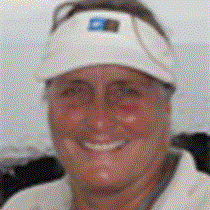Santa Cruz
We have returned to civilization and it is odd to see so many yachts, boats, and ships sharing our anchorage in Academy Bay this morning. We boarded our fleet of Zodiacs after breakfast and tried to disembark on the National Park dock—but it had been destroyed by the waves during the night! So we disembarked instead on the main dock and took a short bus ride and then walked to the Galápagos National Park Service headquarters and the Charles Darwin Research Station. The naturalists took us along a cement block paved road and then a boardwalk, and we visited the tortoise breeding center. The recent death of the last tortoise from the northern island of Pinta, Lonesome George, made front page news in Europe and the USA and for those of us who have taken our guests to see him for many years he will be missed. The locals miss him too, as he has been at the Park breeding center for 40 years, and when he died they left notes and memorabilia in his honor. We never really did know how old George was, but it appears that he died of old age.
We enjoyed seeing the next most famous tortoise in the world: Super Diego. Diego was returned to the Galápagos from the San Diego Zoo some 40 years ago and has fathered hundreds of Española tortoises that have been repatriated to that island. This species of giant tortoise was on the very brink of extinction—with only 12 females and 2 males having been found in the wild on the island of Española. Super Diego came back to Galápagos and with these few other adult animals being bred in captivity, the population on the southern island of Española is now around 2000! Captive breeding of tortoises has been going on since the 1960s and while this is a great success story, it has required significant effort and money.
We observed and photographed the tiny hatchling tortoises as well as several huge adult males this morning at the Park breeding center. After our visit we walked down through the town, shopping and taking pictures as we went. At “The Rock” café we had a glass of blackberry juice and soon boarded small buses for a drive to the highlands and lunch. We stopped briefly in the small agricultural town of Bella Vista to see how sugar cane is pressed and to taste sugar cane juice, sugar cane liquor, and the local organic coffee. The final stop before lunch was an optional ¼-mile walk through a lava tunnel that was lit by a string of electric bulbs. The kids in particular enjoyed this adventure!
Lunch was a hearty buffet on a highland farm called “Rancho El Chato.” Afterwards we went in search of giant tortoises and were thrilled to find several and some were VERY BIG old males! Thirteen individuals was the total count for today. We took the buses further up the island and visited an area of lush vegetation called “Los Gemelos.” Twin pit craters are surrounded by the unusual endemic Scalesia daisy trees that are only found in Galápagos. We were surprised to see ferns, mosses and even a few orchids in this constantly damp highland environment. We searched for, and continued to try to identify, the numerous Darwin finches, and we enjoyed the greenery and the garua mist.
Back down in the town of Puerto Ayora we found it was a hot and sunny afternoon. Those who stayed on shore and caught the last Zodiac back to the ship at 1800 (6:00 p.m.) enjoyed shopping for additional souvenirs and watching all the local action; at the fish market sea lions and pelicans were begging for scraps while fishermen cleaned their catch, people were cooking and buying food on the streets and both indoor soccer and volleyball (but played with a soccer ball!) were being played.




